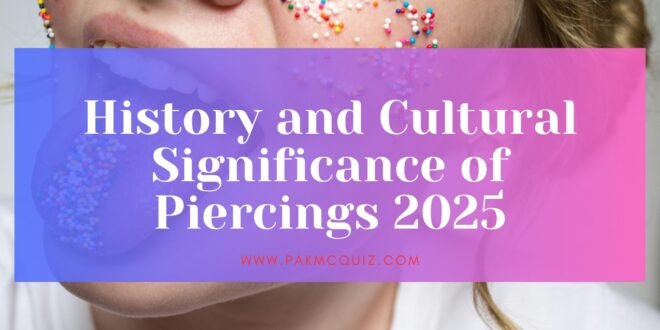History of Piercings have a long and fascinating history, dating back thousands of years. They have been used for various purposes, including cultural, religious, and aesthetic reasons. In this blog post, we’ll explore the history and cultural significance of piercings, tracing their evolution from ancient times to the modern era.
Table of Contents (History of Piercings)
Ancient Piercings
1. Ear
Ear piercings are among the oldest forms of body modification. Evidence of ear piercings dates back to ancient civilizations, including:
- Ancient Egypt: Both men and women wore earrings as a symbol of wealth and status.
- Ancient Rome: Earrings were popular among Roman soldiers and were believed to enhance their strength and courage.
- Ancient India: Ear piercings, known as “Karnavedha,” were a significant rite of passage in Hindu culture.
2. Nose Piercings
Nose piercings have been practiced for centuries in various cultures:
- Middle East: Nose piercings were a symbol of wealth and social status.
- India: Nose piercings, particularly on the left nostril, were believed to alleviate menstrual pain and improve reproductive health.
- Africa: Nose piercings were used as a form of tribal identification and beauty enhancement.
3. Body Piercings
Body piercings have been used for cultural and religious purposes:
- Aztecs and Mayans: Lip and tongue piercings were performed as part of religious rituals and sacrifices.
- Native Americans: Nipple and genital piercings were used in initiation rites and as symbols of bravery.
Modern Piercings
1. 20th Century
The 20th century saw a resurgence of piercings, particularly in Western cultures:
- 1950s-1960s: Ear piercings became popular among women, with the introduction of clip-on earrings.
- 1970s-1980s: The punk movement brought facial and body piercings into the mainstream, as a form of rebellion and self-expression.
- 1990s: Piercings became more diverse, with the rise of navel, tongue, and eyebrow piercings.
2. 21st Century
In the 21st century, piercings have become a global trend, with a wide variety of styles and placements:
- Celebrity Influence: Celebrities and influencers have popularized unique piercings, such as septum and dermal piercings.
- Body Positivity: The body positivity movement has encouraged individuals to embrace their unique styles, including piercings.
- Advancements in Piercing Techniques: Modern piercing techniques and equipment have made piercings safer and more accessible.
Cultural Significance of Piercings
Piercings hold different meanings across cultures:
- Spiritual and Religious Significance: In many cultures, piercings are performed as part of spiritual or religious rituals, symbolizing devotion, protection, or rites of passage.
- Social Status and Identity: Piercings have been used to denote social status, tribal affiliation, and personal identity.
- Fashion and Self-Expression: In contemporary society, piercings are a form of fashion and self-expression, allowing individuals to showcase their personality and style.
Conclusion and History of Piercings
Piercings have a rich and diverse history, with cultural significance that spans across time and geography. From ancient traditions to modern trends, piercings have evolved as a form of self-expression, identity, and artistry. By understanding the history and cultural significance of piercings, we can appreciate the depth and meaning behind this timeless practice.




